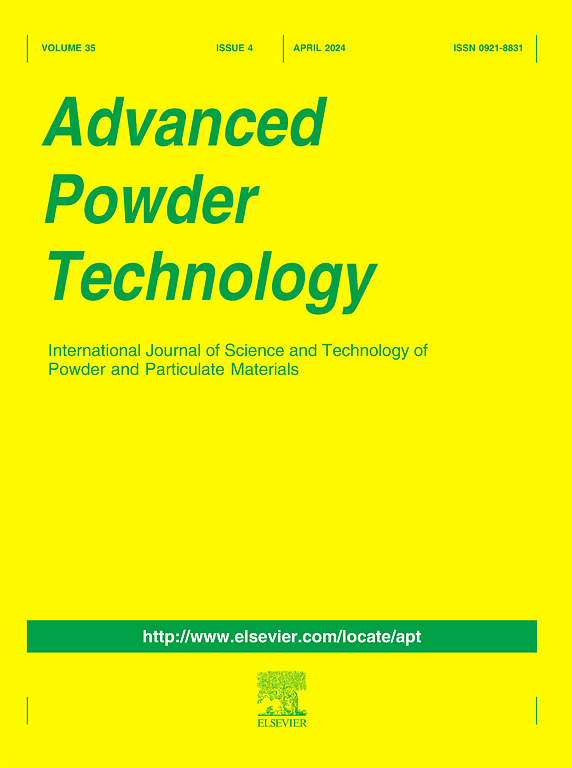通过碳包覆,显著提高了氧化镍的电化学性能
IF 4.2
2区 工程技术
Q2 ENGINEERING, CHEMICAL
引用次数: 0
摘要
NiO是一种传统的低性能超级电容器电极材料,特别是其极低的循环稳定性。迄今为止,碳材料结合、钴离子掺杂、纳米结构的形成等策略对NiO性能的改善效果有限。因此,有理由推断公认的NiO电化学机理与实际情况存在偏差。在这项工作中,我们尝试使用碳涂层和钴离子掺杂的协同策略来获得高性能的NiO。研究结果表明,NiO的低循环稳定性源于其溶解-再结晶行为,而不是公认的应力诱发结构破坏机制。碳涂层和钴离子掺杂分别改善了NiO的外电子转移性能和本征电导率,从而提高了NiO的电活性。结果表明,改性后的NiO在2.0 a g−1的低电流密度下具有4608 c g−1的高比容量,在39.3 a g−1的高电流密度下具有61.8 %的高容量保持率。另一方面,碳涂层通过其物理阻碍作用抑制了NiO的溶解-再结晶行为,从而促进了NiO的循环稳定性;10000 ~ 80000个周期。本工作的结果表明,碳涂层在显著提高NiO性能方面发挥了关键作用。本文章由计算机程序翻译,如有差异,请以英文原文为准。

Through carbon coating to significantly boost the electrochemical performance of nickel oxide
NiO is a conventionally low performance electrode material for supercapacitors, especially its extremely low cycling stability. The effect of so far strategies including combination with carbon materials, cobalt ions-doping, and formation of nanostructure for improving the performance of NiO are proven limited. Therefore, it is reasonable to infer that the acknowledged electrochemical mechanism about NiO exists a deviation from the actual situation. In this work, we try to use a synergistic strategy of carbon coating and cobalt ions-doping to obtain the high performance NiO. The investigation results prove that the low cycling stability of NiO originates from its dissolution–recrystallization behavior instead of the acknowledged mechanism of stress-induced structure collapse. The carbon coating and cobalt ions-doping improve the external electron transfer property of NiO and its intrinsic electrical conductivity respectively, thus promoting its electro-activity. Consequently, the modified NiO achieves a high specific capacity of 460.8C g−1 at low current density of 2.0 A g−1 and keeps a high capacity retention of 61.8 % at high current density of 39.3 A g−1. On the other hand, the carbon coating suppresses the dissolution–recrystallization behavior of NiO by its physical hindrance effect, leading to the promotion of its cycling stability from < 10,000 to 80,000 cycles. The results in this work demonstrates the key role of carbon coating in significantly boosting the performance of NiO.
求助全文
通过发布文献求助,成功后即可免费获取论文全文。
去求助
来源期刊

Advanced Powder Technology
工程技术-工程:化工
CiteScore
9.50
自引率
7.70%
发文量
424
审稿时长
55 days
期刊介绍:
The aim of Advanced Powder Technology is to meet the demand for an international journal that integrates all aspects of science and technology research on powder and particulate materials. The journal fulfills this purpose by publishing original research papers, rapid communications, reviews, and translated articles by prominent researchers worldwide.
The editorial work of Advanced Powder Technology, which was founded as the International Journal of the Society of Powder Technology, Japan, is now shared by distinguished board members, who operate in a unique framework designed to respond to the increasing global demand for articles on not only powder and particles, but also on various materials produced from them.
Advanced Powder Technology covers various areas, but a discussion of powder and particles is required in articles. Topics include: Production of powder and particulate materials in gases and liquids(nanoparticles, fine ceramics, pharmaceuticals, novel functional materials, etc.); Aerosol and colloidal processing; Powder and particle characterization; Dynamics and phenomena; Calculation and simulation (CFD, DEM, Monte Carlo method, population balance, etc.); Measurement and control of powder processes; Particle modification; Comminution; Powder handling and operations (storage, transport, granulation, separation, fluidization, etc.)
 求助内容:
求助内容: 应助结果提醒方式:
应助结果提醒方式:


